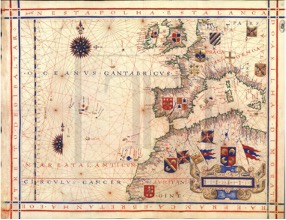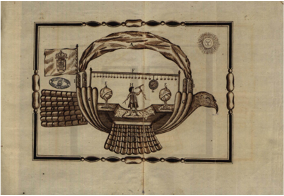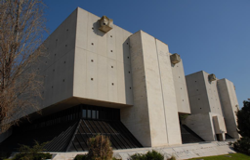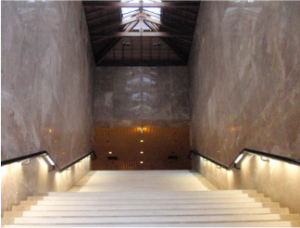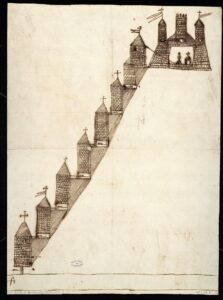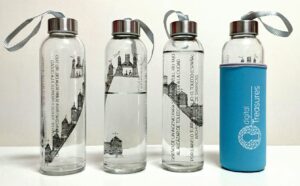With the objective of evaluating the impact of the exhibition “European Discoveries: from the New World to the New Technologies”, which took place in Lisbon, at Torre do Tombo National Archive (ANTT), from July 22 to October 30, with the Portuguese public, the information collected in the scope of the guided tours carried out by ANTT was used. The limitations resulting from the pandemic affected the number of visitors, reducing the impact of an event with these characteristics. In the current year 2021, the total volume of visitors to ANTT, compared to the same pre-pandemic period, dropped by 35%. Nevertheless, between September and October 2021, it was possible to carry out a total of 13 guided tours to groups, involving 125 visitors, broken down as follows:
• 4 groups from secondary education (15-17 years): 49 visitors;
• 6 higher education groups (17-25 years): 58 visitors;
• 3 groups of other visitors (over 45 years old): 18 visitors.
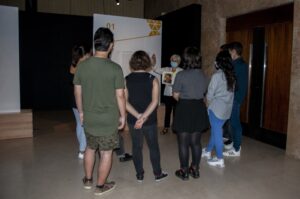
The exhibition was also seen by 730 individual visitors, 13 of whom shared comments in the “Visitors’ book”. Among the latter, there are two professors and an archivist from Brazilian Universities.
Having characterized the universe of visitors, there is nothing better than listening to the testimony of the person responsible for conducting the visits, Maria Trindade Serralheiro, ANTT-DSIEQ technician.
Interviewer: Generally speaking, and from the point of view of visitors, what are the advantages of conducting guided tours of this type of exhibition?
Maria: The great advantage lies in the fact that the information transmitted can be directed to different audience profiles, allowing the visitor to enjoy mediation that meets their cultural interests, their knowledge or even their perceptions of matters related to the exhibited documents. As an example, visits aimed at groups of students can be more directed towards a specific curricular content, pre-established when scheduling the visit with the responsible teacher. In this specific case, it could focus on knowledge of primary sources and themes such as bioethics, human rights, public health, European citizenship, etc.
This is an innovative exhibition, given that it is a collaborative production carried out by European archives, whose thematic scope should be highlighted by the mediator, as it can contribute to reinforcing the awareness of identity belonging, both national and European. The archival documentation, properly framed, referring to different times and spaces, can contribute to sustain the affirmation of a shared memory.
Interviewer: Given the visits made to previous exhibitions, did this one stand out?
Maria: Yes, the visits stood out for their access to a great diversity and types of documents, only possible in a collaborative protection such as “European Digital Treasures”. In addition, alignment with the curricular programs at different levels of education was not only possible but also advantageous, as it enabled integration in a European context, which, although it has always existed, is not always highlighted with the deserved relevance in national school curricula. It should be noted that European History is present in the curriculum of History, but in a very discontinuous way, not allowing the establishment of belonging, an identity rooted in a European context.
Interviewer: Did the other activities carried out within the scope of the EDT project with teachers and schools, in the context, for example, of the “Course of Literacy in Archives”, have an impact on the number or profile of visitors?
Maria: Except for a single specific case, it was not found that the activities developed with the professors through the “Literacy in Archives Course” had worked as a motivational factor for a visit to this exhibition. In fact, as the Portuguese teachers participating in the course stated, it will only have an impact when translated into the mother tongue of students and teachers, as is, in fact, expected in European projects.
Visitors to this exhibition fit the usual profiles: secondary school students (10th, 11th and 12th grades) and groups of students starting university education who come to know the ANTT’s potential for research .
Interviewer: What knowledge did visitors reveal about European History?
Maria: They revealed some knowledge, very fragmented, favoring emblematic and high-impact facts, such as the European Wars, for example, but with little relation to the European political, social and cultural space as a whole.
Interviewer: Is it important that students have some preparation for the visit or, on the contrary, is it better that there is no prior preparation?
Maria: When they are motivated and curious students, preparation doesn’t make much difference. It is important that the school proceeds with the exploration of the contents covered in the exhibition, through the respective catalog, the information accessible through QR-CODE or the website of the promoters.
The contact with such a great diversity and typologies of documents from European archives is very stimulating to broaden horizons and to develop the awareness that archives are fundamental to interconnect peoples, times and places through the construction of a collective memory and that everybody can access it freely, through digital platforms. In this European approach, there is a phenomenon of cultural relativization between the “I” and the “other”, which proves to be very healthy.
Interviewer: Of the various exhibition centers – medicine, energy and industry, transport and navigation – which ones aroused the most interest?
Maria: It was undoubtedly the “pillar” of medicine, the theme of combating the disease, because in a context of public health crisis caused by the pandemic, scientific discoveries in the area of medicine are front-page news. In front of an exhibition that highlights the creativity of European scientific discoveries and technological innovations, the curious and creative young visitors said that if they were allowed to make a scientific discovery to improve the quality of human life, it would be in the area of medicine that they would like to make their contribution.
This nucleus also allowed some reflection on scientific knowledge. The work of Garcia de Orta, a Portuguese physician who wrote about plants and other medicinal products from India (1563), was a pretext to question the nature of scientific knowledge, based on his phrase “What we do not know today, we will know tomorrow”. In times of uncertainty in the face of a pandemic that confronts us with the fragility of knowledge about a new virus, we see how in the past, in similar contexts, scientific discoveries were able to save lives and bring relief; the recognition of ignorance – “what we do not know today” – as a condition for discovery and, on the other hand, optimism in human capacities – “tomorrow we will know” – as a horizon of hope. And also about the obsolescence of scientific knowledge, based on a Nobel Prize in Medicine awarded to a practice of psycho-surgery, prefrontal leucotomy, which was later banned.
The centers (energy and industry, transport and navigation) also deserved special interest, depending on the training areas of the visitors. Students at the Aviation School, for example, “felt at home” in the face of pioneering aviation experiences and the complex and risky challenges of contradicting the law of gravity…
Interviewer: Did the fact that many documents are not physically present have an impact?
Maria: Yes, document reproductions are at a great disadvantage compared to originals. In future exhibitions, it would be good to improve the quality of the reproductions, so that they can compete with the originals. In this domain, but extending to all selected documentation, it would be important to improve contextualization, which is not always accessible to a non-specialized audience.
Interviewer: What is the impact of video games?
Maria: In a 45-minute group visit, the exploration work focused on the exposed documents, leaving this resource to be explored in the next visit or, eventually, at home or at school.
Interviewer: What is the impact of merchandising products?
Maria: The products’ creativity and aesthetics were highly valued, but the fact that they could not be purchased following the visit was disappointing, taking on the role of prolonging the visitor’s fascination.
Interviewer: What are the positive aspects to highlight?
Maria: For young people, Europe is, above all, a space without borders and a space of choice: where to live, where to study and where to practice your profession. Exhibitions of this nature are a resource that archives can make available to support decision-making based on knowledge of the multifaceted history of European culture.
In the visitor satisfaction survey, 85% rated the theme of the exhibition as “Very interesting”. The students who registered comments in the “Visitors’ book” used phrases such as: “Bué gira”, “I really liked it”, “Very cool”. Regarding the contents, phrases such as: “Very interesting”, “Very enlightening”, “Historically rich” stand out. As for the relevance of the themes in general: “Relevant themes”, “it never hurts [the European approach to History]; “The approach to the European dimension was lacking in secondary education”, “the exhibition multiplied my interest”.
Interviewer: What are the aspects to improve?
Maria: The dissemination strategy, which would benefit from being more aimed at schools, through, for example, promotional videos.
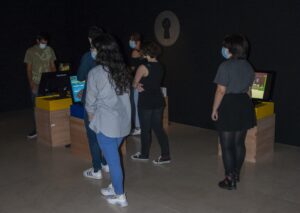
Written by General Directorate of Books, Archives and Libraries, Portugal.

